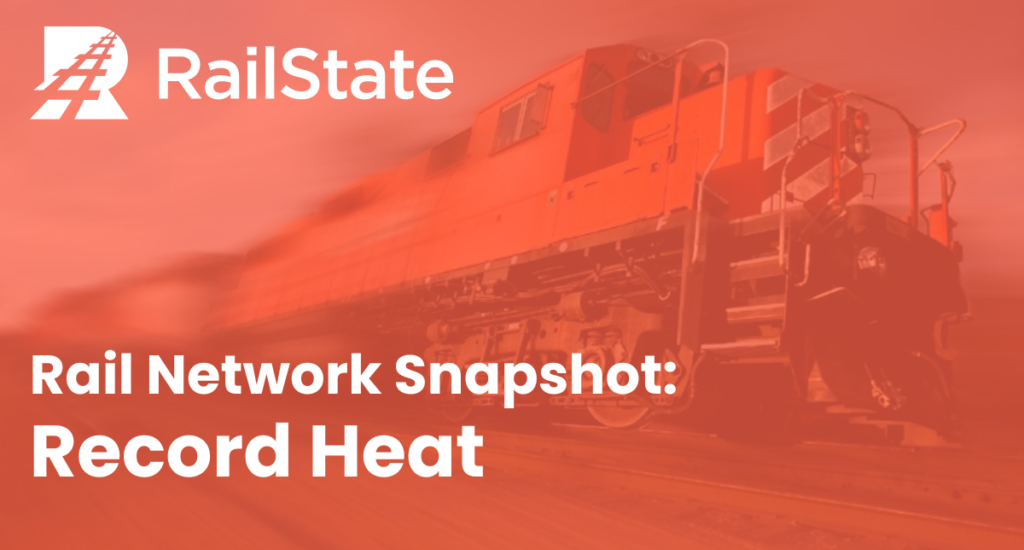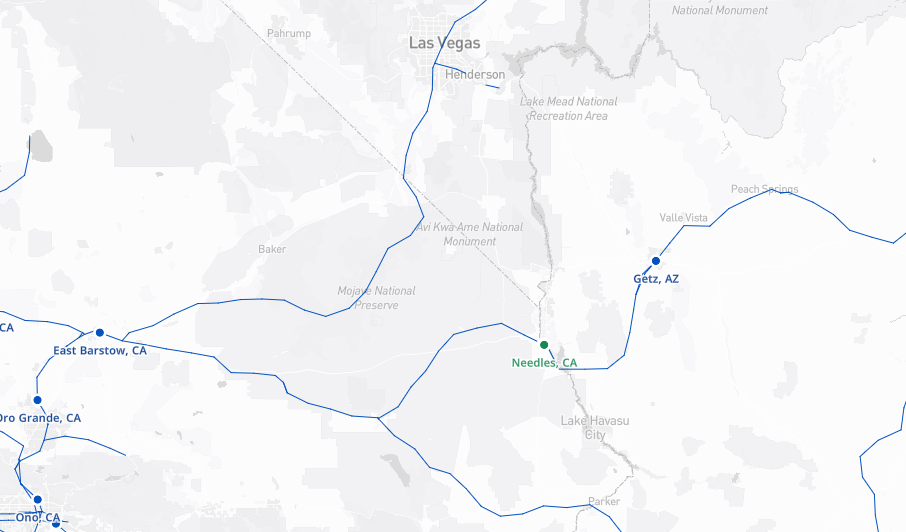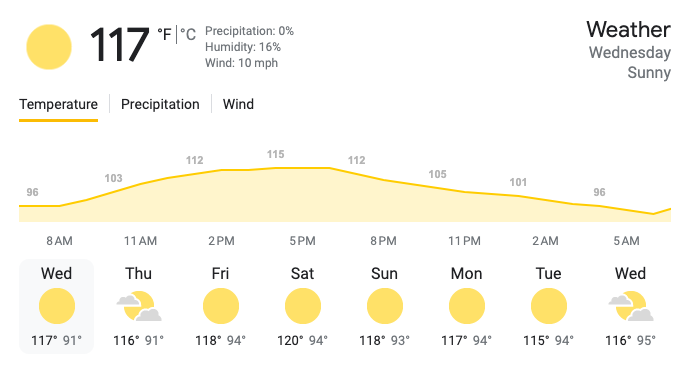Rail Network Snapshot: Record Heat in the Southwest

Much of the United States is in an intense heat wave, with the US Southwest seeing some of the hottest temperatures ever recorded.
RailState has been capturing train movements through the Southwest for over a year at some locations and has added a number of sensors to fill in network coverage in recent months.
One RailState sensor location, which sees some of the hottest temperatures on Earth, is in Needles, CA, covering train movements on the BNSF Southern Transcon.

On July 5, Needles hit a record high temperature for that date: a sweltering 122 Fahrenheit (50C).
The current forecast shows some cooling, if you can call it that, but remains in the high one-teens for the coming week.

These extreme temperatures have not significantly impacted train volumes through the area. RailState’s sensors typically capture about 70 trains per day through Needles, mostly intermodal trains. On the hottest of hot days on July 5, RailState identified 74 trains passing through the area.
Temperature can play an important role in freight rail performance, however, as we saw earlier this year in Canada. For more than a week in the middle of January, temperatures in central and western Canada dipped to historic lows, getting as cold as -58 Fahrenheit (-50C) and forcing massive reductions in train volume and train size. These very low temps make normal train operations unsafe. Read our report on the impact to the rail network of this blast of extreme cold.
From +50C in the blazing desert sun down to -50C in the windy chills of a Canadian Rockies winter, RailState’s sensors are always working to capture train movements in real-time.
To learn more about how you can stay up-to-date on issues across the rail network and use real-time rail network data to make better decisions for your supply chain, reach out to contact@railstate.com or request a demo.
